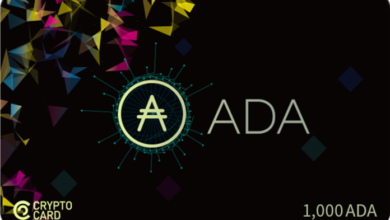Security tokens have taken the blockchain world by storm.
If you have not heard of them yet, you’re definitely missing out on finger-biting action.
As the financial regulatory bodies were becoming more attentive, a new buzzword became the talk of the town: security tokens.
First Things First – What’re Security Tokens?
To understand the term better, let’s first try to have an in-depth understanding of what securities are. Put simply, a security is a financial instrument that can be traded easily and represents a share in the assets of a third party.
According to Howey Test, a financial instrument qualifies as a security if:
- Money is invested in a common company
- Profits are made solely from the efforts made by the third party
If the security token complies to the criteria laid out above, they qualify as a security – a financial asset. That said, security tokens are nothing but digitalized investment products that derive their value from the parent company and are purchased by investors with an expectation that their value will increase with the time and they can be sold at a higher price later to make a profit.
The fact that it is based on an asset or a bond, but in a digitalized manner, usually based on a blockchain, makes security tokens an ideal way to raise funds. This form of crowdfunding has successfully replaced ICOs in 2019 as a secure, credible and “rentable” investment from both sides, the project raising money and the investors investing in the project. To conduct a crowdfunding campaign with security tokens, the company has to comply with its respective country’s regulations.
It is important to mention here that security tokens aren’t like utility tokens. They need proper infrastructure in terms of exchanges and platforms to be tokenized. Also, security tokens put a percentage of the ownership into the hands of the investors. All the attention is on security tokens, but the challenges involve regulation, market demand and issuance. The increased interest has led to a rush to fill the void with numerous projects.
Various companies are working in this direction and are trying to streamline the cumbersome process involved in the launching of security tokens. There are a handful of projects that are determined to turn the issuance of security tokens into a simplified process. After extensive research, the team at The Blockchain Land provides the top 5 security token platforms in the industry at the moment.
We looked out for accessibility, regulatory compliance, and passion that these companies are offering to help entrepreneurs build their projects. We reached out to them to better understand the challenges the industry is facing and what to expect for 2019. The key industry issues became more evident, as well as the next steps an issuer, an investor or another security token platform, should take.
Let’s have a look at each of them.
Top 5 Security Token Issuance Blockchain Companies
Swarm
Swarm is a tokenizing asset platform. The platform opens “up access to the new digital economy.”
Swarm provides SRC20 protocol which is a cryptographic standard for security tokens to tokenize assets which might include agriculture, real estates, and tech companies and so on. In other words, the platform is capable of tokenizing anything that can be considered as assets. They propose an easy way for businesses to digitize their investments through a 4-step process that accompanies you from the definition of fundraising rules to the release of funds.
Swarm also has its native token called SWM which facilitates economic activities on Swarm platform. At the beginning of this year, they announced a “pivot to free tokenization”, which allows businesses access to issuance technology with no upfront fees. Chris Eberle, COO at Swarm, explained to The Blockchain Land that the idea behind this is to allow issuers to focus on bringing an offering to the market, which is one of the main challenges the industry is facing. “The industry is facing supply, demand, and credibility challenges that impact us all.”
Reportedly, the issue of credibility is strongly linked to the ICO craze, as Chris Eberle explained to us. “The word ‘token’ is stuck with the stigma rightfully earned by all the scam projects that brought tokens to market and never delivered on their promises.” The goal now is to get past the noise and work towards establishing a credible environment, which is seen as possible only through collaboration.
When asked about the importance of security tokens in 2019, they explained, “All of us in the industry who have successfully executed an STO – and there are only a few of us – collectively represent but a rounding error compared to the opportunity at hand.”
Becoming something of importance in 2019 is going to take strong execution, and collaboration across the industry.
In addition to adding a few new tokens, Swarm’s next step is focused on scaling through collaboration and integration, of which they can count on investment banks, custody providers, wallets and marketplaces. Releases of the token issuance and fundraising dApp are expected to start in April.
Securrency
As the name suggests, this is a securitization platform for real-world assets. Founded in 2015, their idea is to create “interoperability among blockchains and legacy systems” and offers a secure and compliant service of trading or issuance of security tokens.
However, their tokenization process is a bit different. Securrency makes it easier to issue tokens. The entire process is drag-and-drop based and can be completed with a single click. For easy distribution, the software platform RegTex can help you out by ensuring compliance in securities and digital currency transactions. That infrastructure is supported by the interoperability layer they call the InfinExchange. They allow all sorts of market players to interconnect with their systems because they are interoperable. You can access an infinite range of services.
According to Patrick Campos, Chief Strategy Officer at Securrency, there are two major challenges that the industry is facing at the moment: adoption and interoperability. Patrick explained that the markets are having a tough time distinguishing between digital securities and cryptocurrencies, and that results in slow institutional adoption. This is a result of the fast increase early stage issuance platforms bringing tokens into the market and institutions’ “blanket way” of looking at crypto assets profoundly shaped by the ICO hype.
Interoperability is a directly related issue. Securrency sees interoperability as essential and as the answer to the issue of picking a protocol, a platform. Interoperability means that the players in the market don’t need to depend on one system or one protocol. According to Patrick, interoperability will allow for easier access, which leads to more adoption, which leads to more liquidity.
Based on this principle, Securrency has integrated with existing legacy systems to provide a multi ledger approach. Expected to come out in 2019, their push-and-pull infrastructure technology has integrated existing financial instruments that have been in the market before the creation of blockchain, such as trading and other financial services and activities. The dashboard, conceived to be user-friendly, will be customizable according to needs and purposes, and it’ll serve different functions, such as issuance portal or a full-service investment bank.
There are three things to expect this year. Firstly, the market will continue to mature as the discussion takes place between serious professionals that are placed in the middle of the spectrum dominated by binary forces. Secondly, there will be much more experimentation.
“A lot more of the big players are willing to dip their toes into the water. The long term plan is to unlock a lot of value.”
Third, the market will go from “ice to slush”. They tackle the liquidity issue by promoting something they call the “network effect” expansion of global liquidity through global strategic partnerships. As explained by Patrick, participants can invest in smaller increments as they’ll also be in the position to exit more easily, differently from ICOs. In turn, this will make the market more liquid, which will then attract new participants and expand. However, it won’t be like ICOs days. Parts of the market will be very active, but investors need to understand there needs to be efficient means for a market formation to attract.
Polymath
Polymath proposes a platform that bridges the gap between financial securities and the blockchain. According to their homepage, stocks, bonds, venture capital and private equity function better on the blockchain. Programmable tokens are seen as more accessible, liquid and secure than traditional forms of asset ownership.
Polymath’s global platform provides legal and technical solutions for securitizing bonds, stocks and other assets on a blockchain. Polymath is a self-serve platform – security token issuers can use the Polymath Token Studio to create a security token in 10 minutes, and they can contact securities law firms, broker-dealers, KYC/AML providers, marketing firms, and custody providers for help with their security token creation, cap table tokenization, and security token offering. However, these parts of the process, from drafting documents to fundraising, can take weeks or months. Polymath also has its own native token called POLY which is used as an economic unit for all the operations that are conducted on Polymath’s blockchain.
Graeme Moore, VP of Marketing at Polymath, explained to The Blockchain Land:
“Polymath provides issuers with the tools to program restrictions into their own security tokens in order to comply with the jurisdictional requirements they may have. An issuer can issue tokens from Canada, The United States, Europe, Asia, South America, anywhere provided they receive the legal OK from the specific jurisdiction they are looking to do their offering.”
He also specified that Polymath recommends that all security token issuers seek legal counsel before creating and offering security tokens.
Graeme explained that their biggest challenge today is education. There is still a lot of uncertainty surrounding security tokens, what they are and if they can be regulatory compliant. There are also doubts that they will “live up to the hype” of increasing liquidity, efficiency and transparency. It’s through ST-20 token, or The Security Token Standard (ERC1400), that Polymath is working to improve interoperability and hence, increase adoption. The standard means that companies don’t need to create their own custom technological solution.
The company brands itself as the “Ethereum for security tokens”, and with a standard, they want to create a security tokens revolution similar to the utility tokens boom that took place with the ERC20 standard.
“There must be a standard for security tokens for real, widespread adoption and use, and we believe that standard will be ERC1400. The ultimate goal is for security tokens to become the default form factor for securities. Creating a well-defined and broadly adopted technological standard is a great and necessary step towards that goal.”
When asked about liquidity in the sector, Graeme explained “Liquidity begets liquidity. So, for liquidity to happen, we need liquidity!” The road may be slow, but Polymath is confident that we are moving towards a world of more liquidity for security tokens. Since security tokens are easier to trade than paper share certificates, it is a matter of education and about making a distinction between ICOs and STOs. Once people feel more comfortable with the technology, which usually takes time with new technologies, Polymath sees security tokens “ pulling liquidity from the private securities market more than from the ICO market.”
Securitize
Securitize is a compliance platform and protocol for digitizing securities on the blockchain. They see digital securities (DS) as the modern way to raise capital. Their platform has performed multiple successful issuances of digital securities on the blockchain. Its end-to-end feature allows both investors and issuers to manage their digital securities.
They are strong supporters of digitizing securities, and there are many different kinds of assets that the company supports. On their website, they give six reasons for digitizing securities: compliance, programmable, liquidity, fractional ownership, transparent and immutable, and efficient.
Their DS Protocol “provides a seamless compliant integration solution for issuers, investors and exchanges”, and accompanies the security throughout the entire lifecycle, from issuance to trading, distribution and governance.
In their latest development, they are one of the 10 companies to join the IBM Blockchain Accelerator program. Securitize’s CEO and co-founder, Carlos Domingos, said that “their goal is to build the world’s first debt issuance platform with blockchain technology in 2019. With the aid of IBM, we hope to modernize the $82 trillion corporate debt market – which is currently riddled with inefficiencies and high fees – with blockchain technology.”
BCap
BCap also called Blockchain Capital, is perhaps the first one to come up with a security token. The venture capital firm was set up in 2013, and they were among the firsts to integrate blockchain directly in their own operations by accepting Bitcoin for capital contributions and even investing directly into companies with Bitcoin.
The company conducted its token sale wherein only recognized investors were permitted to participate. You will be astonished to know that the hard cap was hit in six hours, which soon paved the way for other security tokens to follow. The BCAP Token was upgraded last year, with the help of Securitize, an issuance platform for security tokens, to enhance securities regulations process further.
Blockchain Capital was co-founded by Brock Pierce, Bradford Stephens and Bart Stephens. Although BCap isn’t an issuance platform, their motto is to invest in other blockchain based companies, as they see the technology as a “profound invention that offers a better, faster, cheaper way to move money and exchange assets without counterparty risk.” Blockchain Capital’s portfolio includes companies such as Ripple, Circle, Kraken and Coinbase. They’ve invested in more than 70 companies, tokens and protocols.
2019 – the year of security tokens
The main challenges faced by the security token industry are: education, adoption and interoperability. A bigger awareness of what a security token entails and what they offer is necessary to change one’s perception of crowdfunding, which for now is still highly shaped by ICOs. The benefits of these tokens and the increasing offer of interoperable platforms will most definitely increase adoption and as a consequence, liquidity.
Undoubtedly, security tokens are influencing the blockchain industry and the crypto sphere. As governments rush to regulate these securities, blockchain-based companies are turning to STOs to do a more secure crowdfunding that attracts investors due to its high level of trust and credibility. There’s also the expectation that traditional stock exchanges will adopt digitalized securities on their trading platform.
We can then conclude that, despite the challenges encountered by the platforms addressed in this article, the adoption, even if slow, is imminent. Even if security tokens don’t disrupt the world of finance as ICOs did, they will definitely transform the way we raise and invest in money.





I enjoy, result in I found exactly what I was having a look for. You’ve ended my 4 day lengthy hunt! God Bless you man. Have a nice day. Bye
Wow! This can be one particular of the most beneficial blogs We have ever arrive across on this subject. Actually Great. I’m also a specialist in this topic therefore I can understand your hard work.
Normally I do not read article on blogs, however I would like to say that this write-up very compelled me to try and do so! Your writing style has been amazed me. Thanks, quite great article.
Je suis passionné par le Référencement Naturel et les stratégies de Marketing Digital. Je participe régulièrement à des événements sur le Web Marketing et plus particulièrement le SEO. J’anime également des conférences sur différents sujets pour me tenir au courant des mises à jour de l’algorithme de Googles afin d’être plus performant pour mes clients. Cela me permet effectivement de rester au courant des dernières innovations et nouvelles opportunités de trafic pour mes clients. Formateur en SEO et Web Analytics pour les écoles lilloises ISEFAC Alternance et SUPINFO. Je communique à mes étudiants les meilleures pratiques et astuces quant à l’utilisation de la Search Console et des solutions Analytics permettant l’analyse du trafic organique ainsi les conversions d’un site Internet. Avec les étudiants de SUPINFO Lille, nous avons par exemple réalisé en 2022 le concours hesseuhau.
You could certainly see your skills within the work you write. The world hopes for even more passionate writers like you who are not afraid to say how they believe. At all times go after your heart.
I have been absent for a while, but now I remember why I used to love this web site. Thanks , I?ll try and check back more often. How frequently you update your web site?
Hello There. I discovered your weblog the usage of msn. This is a very neatly written article. I?ll make sure to bookmark it and return to read extra of your useful information. Thanks for the post. I will certainly return.
Normally I don’t read article on blogs, but I wish to say that this write-up very forced me to take a look at and do so! Your writing taste has been amazed me. Thanks, very great article.
Thanks for sharing, this is a fantastic blog post.Really thank you! Much obliged.
My website: первый анал порно
Heya i?m for the primary time here. I found this board and I find It really useful & it helped me out much. I am hoping to give something again and help others such as you aided me.